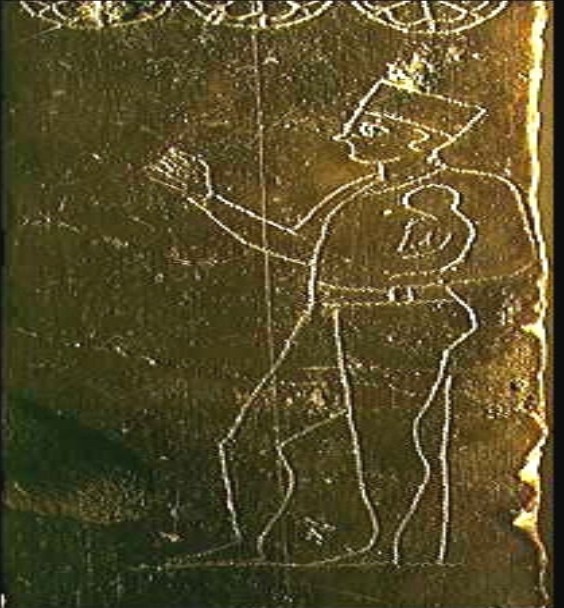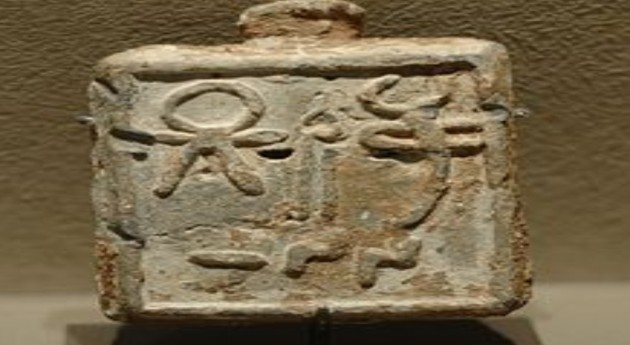Carthage's pantheon and cult
Phoenician seafaring led to the establishment of trading posts. Essentially set up for warehousing and trade, they no less boasted a sanctuary erected alongside the earliest infrastructures. The mobility of the goods exchanged betokens a dynamic human mobility resulting in voyages and ongoing migrations of varying magnitude. The upshot of those was mixed marriages, multicultural, cosmopolitan perspectives, assimilated deities, peaceful coexistence between diverse populations and gods who, initially diverse, became with time similar throughout the Mediterranean. This situation changed, to a degree, with the growing might of Carthage as a political and military power in the 6th century BC. Religion has proved to be the most controversial aspect of Carthaginian home culture as a result of the accusations of ritual child sacrifices laid against the city, such as can be found in some classical sources.

Carthage's mythology was essentially brought in from Phoenicia. The pantheon ferried by seamen and traders come from the East was adjusted to local traditions. Some deities achieved a poliad status. Tanit, originally a Berbero-Libyan divinity, whose name has resisted interpretation, was a symbol of fertility, birth and growth. Growing in importance, she became the poliad goddess of the Carthaginian city, identified to Astarte a Syro-Palestinian goddess of fertility and war. In other posts, though not in Carthage it was the latter who maintained her predominance in Phoenician cults. Tanit is so frequently associated to Baal Hamon that they seem to form a couple. Phoenician born, this god had also garnered Egyptian traits. He was a symbol of fecundity and good harvests. It is to this god, central to Carthaginian cult, that human sacrifices were offered. Other deities complemented the Carthaginian pantheon among which Eshmun, god of medicine and Melquart, god of growth and wealth. Brought in by the Phoenicians, Melqart's figure was later augmented with features from Greek hero Heracles[1]. Ammon, familiar to the « Libyans »
, was associated to a ram-featured local god enjoying a large following, this regardless of a Greek name meaning « sandy »
owed perhaps to his cult place in the Siwa oasis some 500 km west of Memphis, one of Pharaonic Egypt's capitals.
Religion was a matter of state in Carthage although priests did not have a direct hand in politics in the narrowest sense. They enjoyed significant influence with the populace. The cults were structured around a priesthood the higher echelons of which were occupied by members of the city's powerful families. This might have added a theocratic dimension to the religious establishment thus symbolically legitimising the political power. Necropoleis were always to be found well away from Phoenician cities' living quarters. Archaeological evidence of these and of the cults associated to them can be found throughout the Mediterranean space.
Concerning sacrifices, ancient sources are various and diverse: mammals and birds were offered in sacrifice. Offerings came in the form of vegetables, foodstuffs, symbolic objects. After sharing the product of the sacrifice between divinities, priests and worshipers, a stella was erected in memoriam and in recognition. The historiographic dispute on the sacrifice of children in Phoenician-Punic civilisation has yet to be decided with regard to the extent and duration of the practice: in the current state of the sources, it is not possible to ascertain whether the bones found in some urns result from human sacrifices, or to establish that the places where they were found are other than children necropoleis. In the Phoenician context burying was the preferred practice up until the end of the second millennium, then incineration became a majority choice between the 8th and 6th century. It would appear that the ceremonies conducted for the burial of children were complex and not necessarily associated to children « offered »
, in other words killed. At the origin of the polemic, propaganda tracts sought to discredit an old enemy. The two authors on whose work contemporary historiography relies are Diodorus Siculus and Plutarch[2]. Both Greek speakers, they were not contemporary to the facts they wrote about. They report the fact in Carthage but not in Phoenicia and draw a sharp distinction between human sacrifice and ritual sacrifice as practiced by overseas Phoenicians. In the cases where it is proven, child sacrifice as practiced by West-Mediterranean Phoenicians did not correspond to a regular practice but was on the contrary linked to exceptional circumstances, scourges like the plague: such would be the occasion for the immolation of human beings, young or adults, intended to placate the gods.
Infant sacrifices appear to have been neither a regular nor a systematic practice, and neither is it attested in all Phoenician communities of the Mediterranean basin. The cult of a vast range of divinities is probably the most salient aspect of Phoenician religion: the populace adored the god of their city without any regard for the cult practiced in the neighbour or the rival city. Significant discoveries on Morocco's pre-Roman sites set further back the apparition of an urban society on Morocco's Mediterranean and Atlantic shores. Pliny the Elder[3] indicates that Lixus, which played an important part in the cultural and spiritual life of ancient peoples was « the subject of such wondrous fables [...] this was the scene of [Antaeus'] combat with Hercules, and here were the gardens of the Hesperides »
. The Archaeological findings consolidate Michel Ponsich's research in Tangiers. The influential position of this location's population during antiquity hangs on their geographic situation, which encouraged the development of a more advanced civilisation at the crossroads of great commercial and migratory flows.







